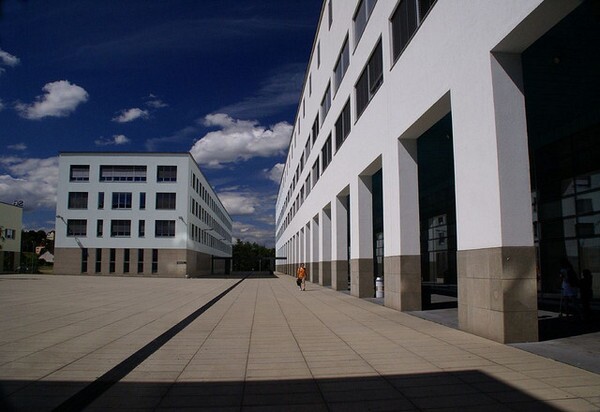Swiss Study Offers More Efficient, Thrifty PV Cells

From within the walls of this prestigious Swiss engineerng university, a potential breakthrough in inexpensive solar | Photo: Henri Weisen/Flickr/Creative Commons License
A team of researchers from Switzerland's Ecole Polytechnique Fédérale de Lausanne (EFPL) claims to have built a record-breakingly efficient silicon photovoltaic cell, and says they should be able to make it available and inexpensive in the short term. The cells, built by laminating layers of amorphous silicon and crystalline silicon, convert 22% of the light that strikes them to electrical power -- a record for silicon-based PV cells, and better than most high-efficiency thin-film PV panels.
Related

Explained: Understanding PV and Solar Thermal
The work was done at EFPL's Institute of Microengineering in Neuchatel, led by Photovoltaics Laboratory director Christophe Ballif. "We apply an infinitesimal layer -- one hundredth of a micron -- of amorphous silicon on both sides of a crystalline silicon wafer," Ballif explained in a press statement.An advantage of using experimental silicon cells over thin film that already approaches the efficiency Ballif and his team achieved: silicon's way cheaper. The EFPL PV Lab has corporate backing from manufacturer Meyer Burger, which is already gearing up to produce cells like Ballif's team is developing.
The EFPL PV Lab suggests that in three to five years, their process could provide enough power for a four-person household with $2,500 worth of PV cells, with production costs for manufacturers as low as $100 per square meter. With the amount of sunlight Switzerland gets, that works out to about 250 kilowatt hours of power each year for that $100 worth of production costs.
That figure could only be significantly higher in most of California, were we to import the technology here.
The results of the EFPL PV Lab work are set to be published in an upcoming issue of the IEEE Journal of Photovoltaics.
ReWire is dedicated to covering renewable energy in California. Keep in touch by liking us on Facebook, and help shape our editorial direction by taking this quick survey here.


